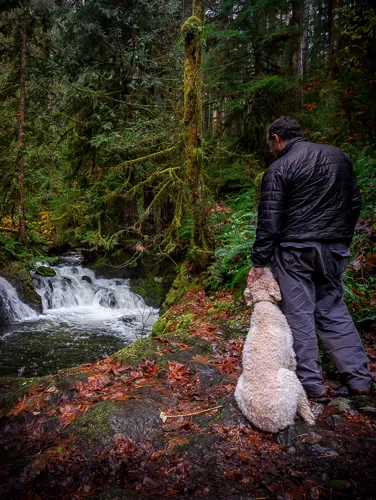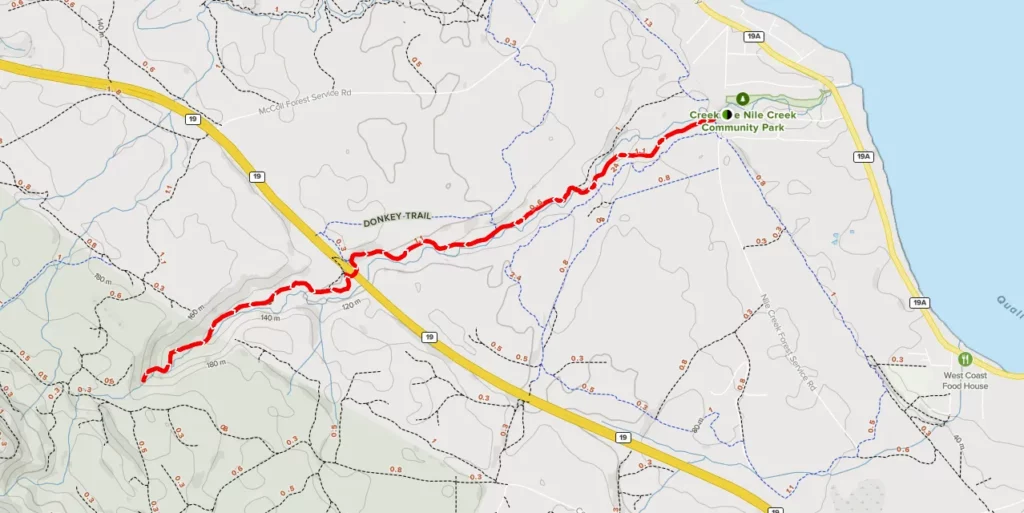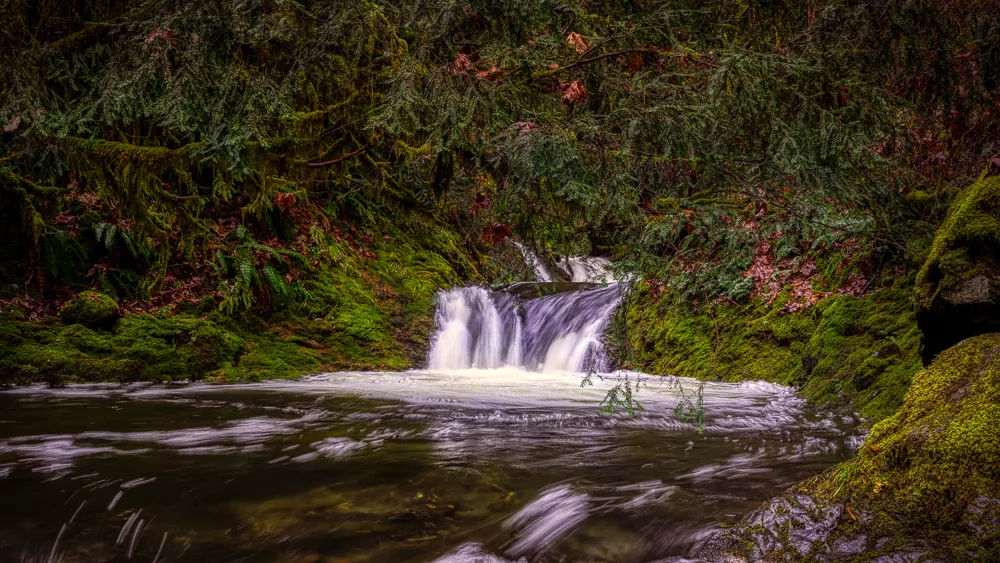
Photography as a Hobby for Beginners: Unlock Your Artistic Vision
Photography can be a fulfilling and enjoyable hobby that brings a creative outlet to your


Where is the Nile Creek Trailhead? It’s one of the most questions I get asked. Why? Well! the hike travels through dense old growth forest and leads you to the rushing waters of 3 small waterfalls.
Ascend and descend with the trail as you pass through trees covered in moss with various sorts of plants under your every step. Dawn those hiking boots and gaiters, as the trail is always muddy, but well worth the trip. You will be treated to the stunning sight of cascading waterfalls flowing over moss-covered rocks and into the pool below once you reach the falls.
There are 2 different areas that you can start the hike from.
This route is a 10-Km out-and-back trail taking 3 hours to complete. Nile Creek trails is regarded as moderately difficult. Even though it’s a popular hike, you can still find some solitude.

The Island highway passes over the creek. There is parking for 4 vehicles on shoulder of highway 19 before the Nile Creek Bridge, if coming from the south. Descend under the bridge and take the path to your left, through the woods.
Nile Creek trail is a lovely trek in the old growth-forest. Be prepared to get wet and muddy. There are many mucky areas with fallen trees, rope bridges, and a lot of uphill and downhill travel. This trek isn’t ideal for people with balance or mobility issues. Having said that, the walk is beautiful and lush and features three magnificent waterfalls. The difficulties it poses are well worth it.
The best time to photograph the Nile Creek Trailhead is during the morning or evening hours. During these times, the waterfalls will be illuminated by the sunlight and look beautiful. I personally prefer late Nov or early spring when the water will be at it’s highest.
A DSLR, Mirrorless or even a smart phone camera should do you just fine in photographing Nile Creek waterfalls.
A tripod will help you capture the ideal silky smooth water as a longer exposure is required for this technique. A tripod helps by reducing camera shake and improving picture quality.
Polarizer and Neutral Density Filters will help get the silky smooth look for the water.

When photographing waterfalls, it’s important to choose the right time of day to take photos. I prefer morning or early evening, when the light is just right. Avoid taking waterfall photos during the midday sun when it’s too bright. This is when the sun can cause hot spots on the falls. Cloudy days are your friends.
Normally we want the silky look of the water falling over the falls. To accomplish this a tripod is your best friend. A normal than longer exosure is required which makes hand holding difficult to get that perfect silky water look.
To capture the movement of the water in waterfall photography, start by setting your camera to a slow shutter speed. Slow shutter speeds will allow you to freeze the motion of the waterfall in time, preserving its beauty for posterity. I suggest starting at 1/3 or slower shutter speed.
Because we are now shooting with a slower shutter speed we need to make adjustments to the camera in some other way. One of these ways is to increase your ISO. Just remember that to high of an ISO can cause noise in the shadow area of your image.
One way to achieve a good depth of field in your waterfall photography is to use a small aperture (F10-F18). This will keep everything in focus. A small aperture creates a more dynamic photo, which is perfect for landscape photos.
Polarizing filters reduce glare on wet surfaces by altering the light reflected off them. To reduce reflections from the rocks I always use a polarize filter
Different compositions can be fun and interesting, depending on what you are looking for. Try photographing waterfalls at different times of the day, get up high or shoot from down low.
From the start of the hike at Nile Creek trailhead, you’ll be treated to a variety of different terrains and ecosystems, from old-growth forests, muddy trails, and meadows.
Despite its challenges, Nile Creek hike is worth the effort it has something for everyone. So why not lace up your boots, grab the camera gear and go? You won’t be disappointed.
The main features of this trail include: lush forested environment with numerous natural debris paths, several muddy areas, rope bridges and much up and down; moderate difficulty rating (with definite tricky bits).
You’ll want to arrive well-prepared for this hike as hiking boots and poles are recommended; as is plenty of water and a significant snack. Allow yourself enough time to complete the full 11 – 13 km trek – it’s definitely worth taking your time!
The Nile Creek Trail is a 10-rated trail, with a moderate difficulty and duration.
The Nile Creek Trail is a moderate distance, with some tricky bits. The distance of the trail is 11 – 13 km, so give yourself enough time to complete it.
The elevation of the Nile Creek Trail is 30 feet.
The average time it takes to complete the Nile Creek Trail is about 2.5-4 hours, and the distance is 10 km.
The Nile Creek Trail is a great hike to do all year long, but during the winter it can be tough and muddy. Make sure to wear the proper footwear, I also suggest gaiters, so you don’t get wet or muddy.
Hiking the Nile Creek Trail can be a challenging experience, but with the right gear you’ll be able to make it through. To make sure you’re prepared for this hike, bring along water, snacks, and proper shoes. Make sure to bring a map of the area in case you get lost, and always be aware of your surroundings when hiking in unfamiliar territory.
Yes! There are waterfalls on the Nile Creek Trail.

Photography can be a fulfilling and enjoyable hobby that brings a creative outlet to your

Welcome to our guide to Photoshop tutorials for beginners: A Complete Beginner’s Tutorial for Learning

Creating stunning images is all about nailing the perfect colour grade. It’s what makes your